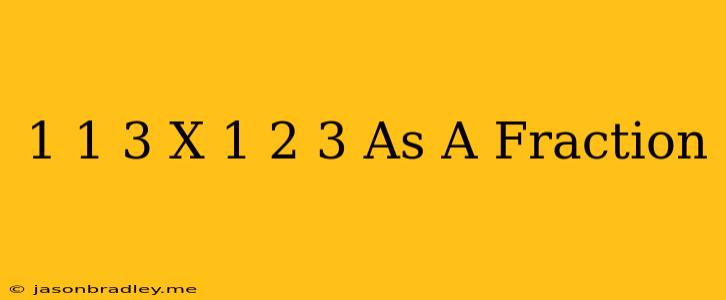Multiplying Mixed Numbers: 1 1/3 x 1 2/3
This article will guide you through the process of multiplying mixed numbers, using the example of 1 1/3 x 1 2/3.
Understanding Mixed Numbers
Mixed numbers consist of a whole number and a fraction. For example, 1 1/3 represents one whole and one-third.
Converting Mixed Numbers to Improper Fractions
Before multiplying, we need to convert the mixed numbers into improper fractions. Here's how:
- Multiply the whole number by the denominator: 1 x 3 = 3
- Add the numerator: 3 + 1 = 4
- Keep the same denominator: 4/3
Therefore, 1 1/3 is equivalent to 4/3.
Applying the same process to 1 2/3, we get:
- Multiply the whole number by the denominator: 1 x 3 = 3
- Add the numerator: 3 + 2 = 5
- Keep the same denominator: 5/3
So, 1 2/3 is equivalent to 5/3.
Multiplying Fractions
Now that we have our improper fractions, we can multiply them:
(4/3) x (5/3)
To multiply fractions, we multiply the numerators and the denominators:
(4 x 5) / (3 x 3) = 20/9
Converting Back to Mixed Number
The result, 20/9, is an improper fraction. We can convert it back to a mixed number:
- Divide the numerator by the denominator: 20 ÷ 9 = 2 with a remainder of 2.
- The quotient (2) becomes the whole number part of the mixed number.
- The remainder (2) becomes the numerator of the fractional part.
- The denominator stays the same (9).
Therefore, 20/9 is equivalent to 2 2/9.
Conclusion
By converting the mixed numbers to improper fractions, multiplying the fractions, and converting the result back to a mixed number, we found that 1 1/3 x 1 2/3 = 2 2/9.
